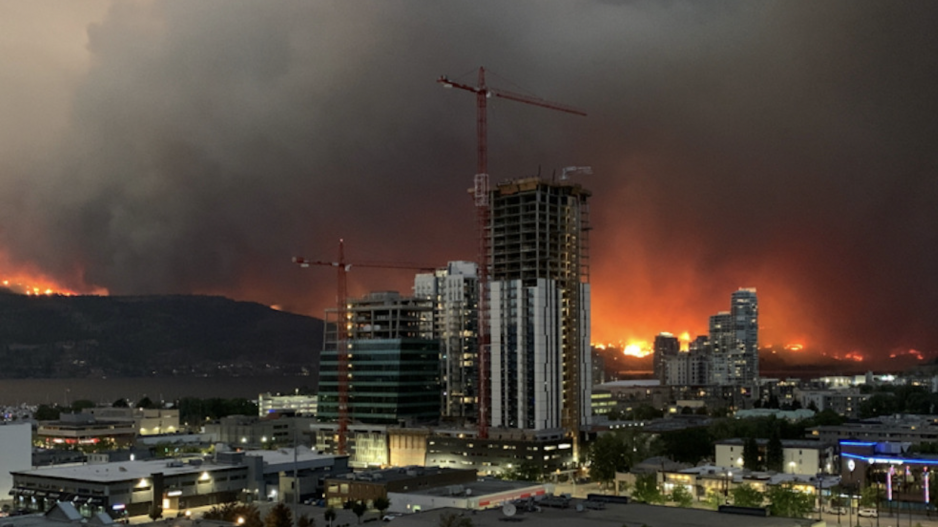Wildfire and drought are the sharp edge of climate change for Okanagan Valley residents, who continue to increase by more than 10 per cent annually.
This year’s Level 5 drought set the stage for the McDougall Creek wildfire, the region’s biggest wildfire since the Okanagan Mountain Park blaze of 2003 that displaced 27,000 residents and consumed 239 homes.
This year, fewer people were evacuated and just 189 properties were lost, but the psychological impact was arguably far greater as the province experienced its worst wildfire season on record.
The final tally of losses is not in, but it’s also likely to outstrip the $200 million reported in 2003, thanks to the steady rise in the value of local real estate.
But the desirability of the Okanagan means people aren’t staying away. With wildfires becoming more common, many buyers see them as more of a seasonal occurrence rather than one that could destroy a retirement dream.
Jonathan Friesen, CEO of Kelowna-based residential developer Mission Group, was evacuated with his family both in 2003 and again this year. Wildfires are something he takes seriously, though this year’s blaze left little trace in his neighbourhood.
“We were out for about a week, but when we moved back there was no evidence of any fire,” said Friesen, who lives in Glenmore. “The fire never made it into the urbanized areas of Kelowna.”
It was a different story in 2003, when five homes on his street burned. Yet the impact was minimal, with the local response being to rebuild and buyers returning to neighbourhoods as the city developed management plans to reduce the risk of interface fires.
“We were shocked at how short memories are,” Friesen said. “At some level, the more practical folks said all the fuel has been burnt in Kettle Valley, so I think we’ll rebuild there because the chance of it burning is zero.”
The experience has given him the confidence that wildfire is not a major concern of potential buyers, so long as fires keep their distance.
Mission Group is about to launch Alma on Abbott, a six-storey wood-frame building in Pandosy Village set to complete in 2025. The project is in an urban area away from wildland interface, and code requirements mean fire suppression systems would quickly come into play should embers drift down from fires in the surrounding hillsides.
“The long-term answer is it won’t have any effect,” he said of recent wildfires. “The traffic that we’re seeing from our registration base tells us that.”
Penticton
It’s a similar story in Penticton, where Curt Jansen, vice-president, sales and marketing at Greyback Construction Ltd.’s 600-unit Skaha Hills development, reported steady demand as the project’s fourth phase prepares to launch with 150 homes.
Penticton’s position between two lakes as well as a regional airport that’s home to a squadron on firefighting planes, comforts many buyers, few of whom ask after programs designed to FireSmart communities.
“That issue doesn’t come up,” he said. “It’s a relatively safe area.”
What’s surprised him is the strength of sales given rising interest rates, which have caused some deals to fall through because the purchasers couldn’t sell their existing homes.
“I’d say that’s bigger than the fires, for sure,” he said. “Our sales have been pretty robust lately, which I was surprised at given the interest rates. Our market still seems intent on coming here.”
But the velocity of deals is slowing, a sign that not all is well.
An analysis by Landcor Data Corp. indicates that 44 per cent of properties in West Kelowna were impacted by evacuation alerts or orders as of the end of August.
The more properties affected in a given area, the less willing insurers may be to cover those areas.
“[Coverage] will go up significantly (dragging down prices) or will be available with very limited perils included,” Jeff Tisdale, president and CEO of Landcor explained. “At which point, lenders may either not lend, or look to have more down payment from the borrower to offset risk.”
According to the Insurance Bureau of Canada, “wildfire still remains largely insurable across Canada” but the 2023 season was a stark reminder of the very real risks property owners face from extreme environmental conditions. It advises property owners to check their coverage prior to a disaster.
More homes needed
Elton Ash, executive vice-president with Re/Max Canada, knows from personal experience that not all policies are created equal. The way his policy was applied contributed to his decision not to rebuild, opting instead to move downtown.
“The terms they put in place to rebuild were unacceptable to the builder,” he said.
However, the loss and damage of structures led to a surge in construction the following spring that created opportunities.
“It was five months later that the construction side of the industry really started to go,” Ash said. “It ended up being an economic boom for the community.”
Ash expects a similar dynamic this year, with the caveat that supply chain issues and other factors that have limited new construction will complicate the reconstruction process.
“The demand won’t be dampened, it’s going to be inventory that’s the issue,” he said.
A draft housing strategy the City of West Kelowna published two weeks before the McDougall Creek fire erupted noted a current core housing need of 790 units based on the 2021 census. A further 1,816 units are required between 2023 and 2031. In total, 1,773 homes are required for purchasers and 833 for the rental market through 2031.
The draft strategy said rising development costs “make it difficult – and in some cases impossible – to get nonmarket and rental projects off the ground.” A limited land base and lengthy municipal approval processes were cited among the factors adding cost and scheduling delays to projects.




